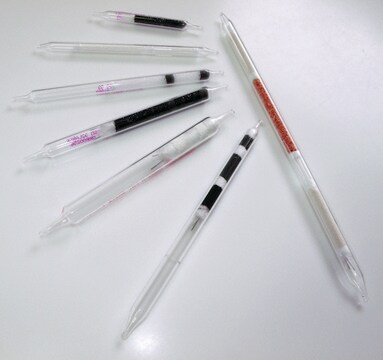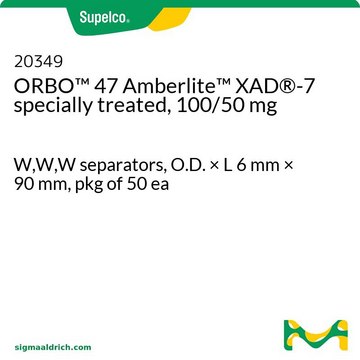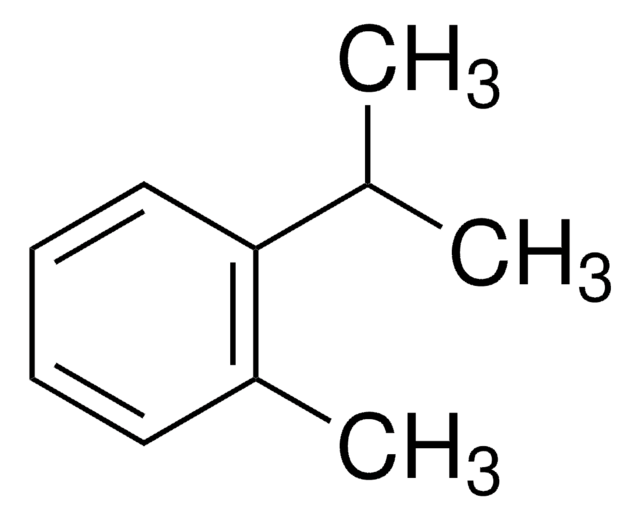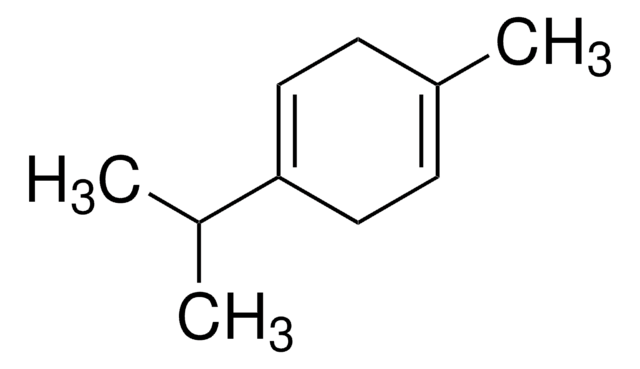20358
ORBO™ Carboxen-564 Röhrchen
W,F,F separators, O.D. × L 6 mm × 75 mm, pkg of 25 ea, for analyte group MEK (methylethyl ketone)
Synonym(e):
ORBO™ 90 Carboxen® 564 (20/45), 160/80 mg
About This Item
Empfohlene Produkte
Materialien
W,F,F separators
Qualitätsniveau
Agentur
NIOSH 2500
Produktlinie
ORBO™
Zusammensetzung
Bed A, 160 mg
Bed B, 80 mg
Verpackung
pkg of 25 ea
Hersteller/Markenname
ORBO™ 90
Methode(n)
active air sampling: suitable
AD × L
6 mm × 75 mm
Matrix
Carboxen® 564 Carbon Molecular Sieve (CMS)
Partikelgröße
20-45 mesh
Anwendung(en)
air monitoring
environmental
industrial hygiene
Kompatibilität
for analyte group MEK (methylethyl ketone)
Suchen Sie nach ähnlichen Produkten? Aufrufen Leitfaden zum Produktvergleich
Verwandte Kategorien
Allgemeine Beschreibung
- ORBO™ 90 Carboxen® 564 (20/45), 160/80 mg solvent desorption tube is designed for gas and vapor sampling.
- It contains two beds of the same selective adsorbent separated by glass wool or foam.
- Dual-layer or two-bed construction of the tube allows for any sample breakthrough to be captured in the smaller back-up bed.
Rechtliche Hinweise
Lagerklassenschlüssel
11 - Combustible Solids
WGK
nwg
Flammpunkt (°F)
Not applicable
Flammpunkt (°C)
Not applicable
Hier finden Sie alle aktuellen Versionen:
Analysenzertifikate (COA)
It looks like we've run into a problem, but you can still download Certificates of Analysis from our Dokumente section.
Wenn Sie Hilfe benötigen, wenden Sie sich bitte an Kundensupport
Besitzen Sie dieses Produkt bereits?
In der Dokumentenbibliothek finden Sie die Dokumentation zu den Produkten, die Sie kürzlich erworben haben.
Kunden haben sich ebenfalls angesehen
Unser Team von Wissenschaftlern verfügt über Erfahrung in allen Forschungsbereichen einschließlich Life Science, Materialwissenschaften, chemischer Synthese, Chromatographie, Analytik und vielen mehr..
Setzen Sie sich mit dem technischen Dienst in Verbindung.









